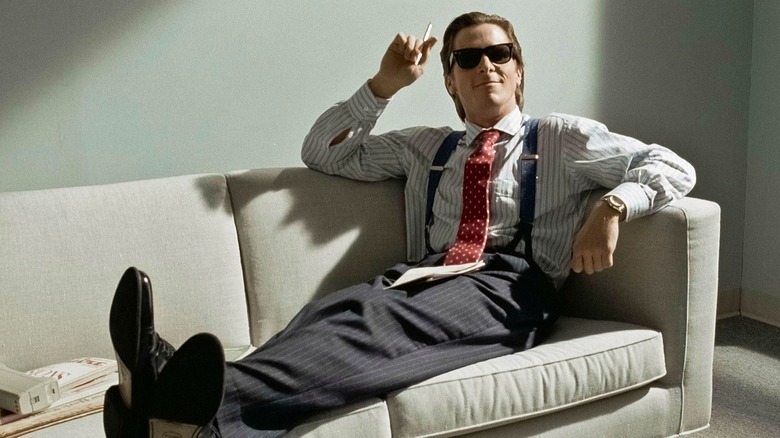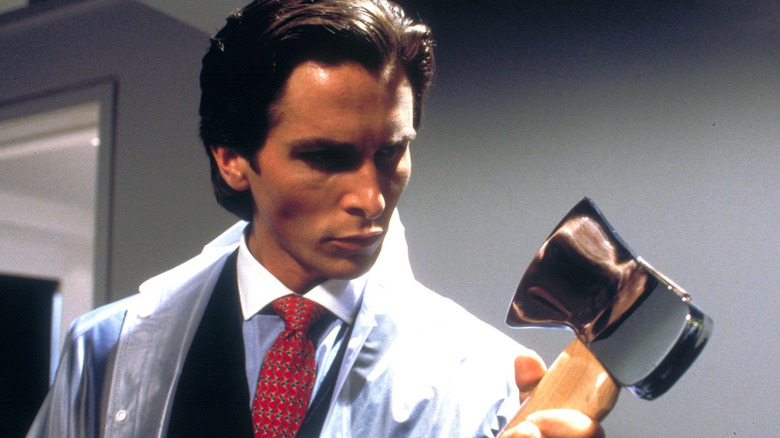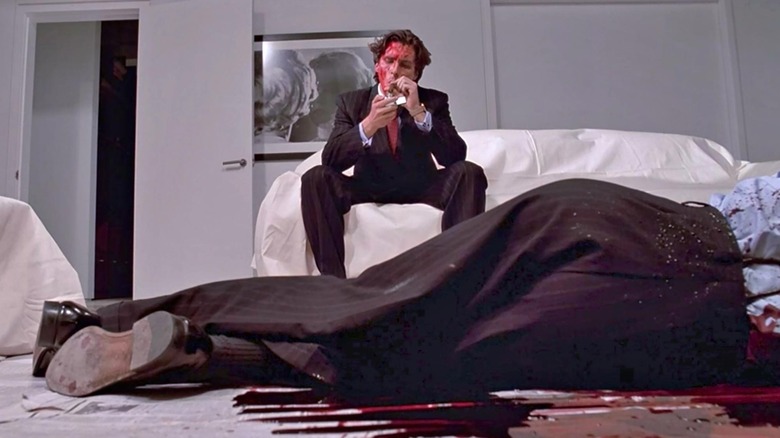It Took More Than A Few Rejected Scripts To Find The Right Tone For American Psycho
Certified modern classic "American Psycho" was up against a major challenge in its conception: adapting a beloved novel and translating it onscreen. The first step in that process, after acquiring the rights to the story, was to find the perfect screenplay to bring it to life. The script would act as a roadmap in guiding the film to its completion, and the wrong map could have led the film down the path of obsoletion.
Jonathan Pressman, the producer of "American Psycho," had a very specific vision for the film that was more than just a strict adherence to the source material. It was important to him that "American Psycho" be accessible to a wide audience despite its racy subject matter. Pressman told The Guardian that the pre-production process of the film required weeding through a lot of screenplays in order to find the perfect fit — including one written by the novel's author, Bret Easton Ellis, himself.
Ellis wasn't the right fit
As the author of the source material, Ellis seems to an outside observer like the obvious choice to write the film adaptation — not so, according to Pressman. While Ellis' writing was celebrated for being extremely gritty, Pressman was looking for a less visceral tone for the film. Ellis' screenplay was, in Pressman's words, "completely pornographic and ending with a musical number," an idea that bears a hilarious contrast to the currently open-ended, interpretive conclusion of the film. Naturally, this version would have alienated many viewers from the theater, not to mention distributors in charge of getting the film into theaters to begin with. I would have absolutely loved to see Ellis' no-holds-barred vision for "American Psycho," but I cannot imagine the modest owner of my hometown theater programming anything that fits that description.
The screenplay ultimately chosen was written by Canadian filmmaker Mary Harron, who also went on to direct the film. She and Pressman shared a concern with making the film overly explicit, but her reasons were more emotional than logistical. In Harron's view, an interpretation that too closely reflected the perspective of the protagonist would encourage the audience to side with him rather than abhor him. She felt the only way to avoid this was to affect "a kind of cool detachment," adding that seeing Patrick's violence from his point of view would permit the viewer to "get into it," identifying with the enjoyment that he derived from killing.
The ratings board was still nervous
Harron may have been resistant to the potential of "American Psycho" to encourage violence, but she ultimately decided that it was better to accurately reflect the darker aspects of society than to "present the world as [she] would like it to be." She was inevitably able to strike a balance between keeping an objective lens on the protagonist while accurately illustrating his perversions.
The American ratings board did not necessarily agree, however, having inevitably branded the film with an R rating due to a sex scene that they criticized for its "overall tone" after nearly giving the film a dreaded rating of NC-17. Harron was surprised by this particular criticism, given that she had done her best to make the explicit scene "deliberately unerotic." As Patrick engages in a narcissistic fantasy gazing at his own reflection, the prostitutes in his bed "look kind of bored." This is the most sexually graphic moment of the film, so one can only imagine what Ellis' version might have looked like had his screenplay been chosen for the adaptation. Given that so many young men identify with Patrick and his sinister proclivities as it is, perhaps Pressman and Harron were right in anticipating that a more subjective tone would have been truly damaging for impressionable audiences.


